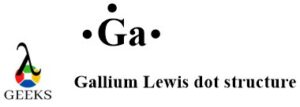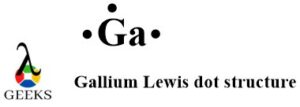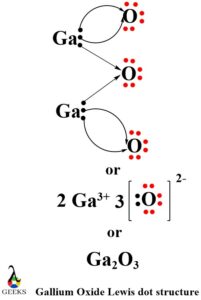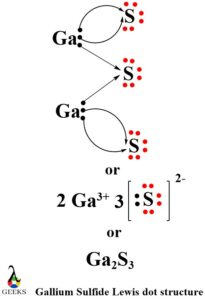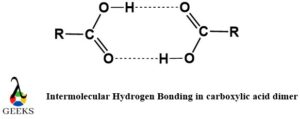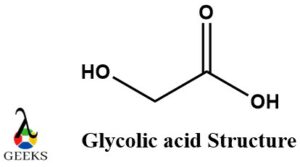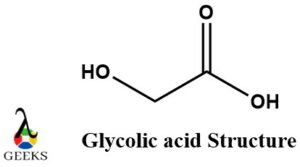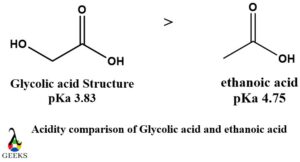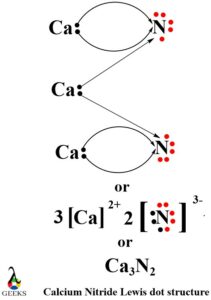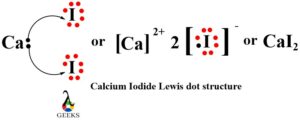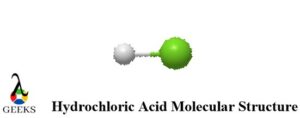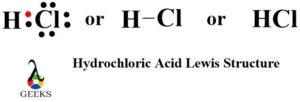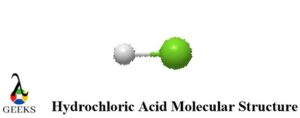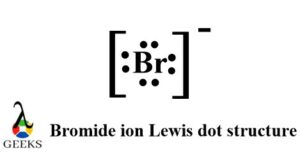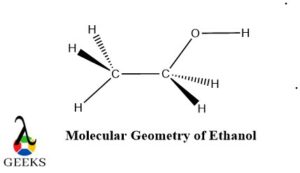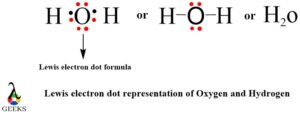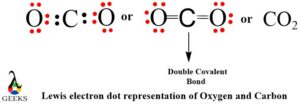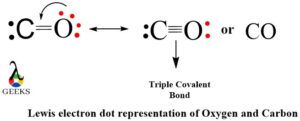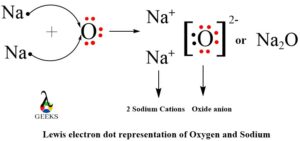Selenium hexafluoride (SeF6) is a chemical compound that consists of one selenium atom bonded to six fluorine atoms. It is an important compound in the field of chemistry due to its unique structure and properties. The Lewis structure of SeF6 helps us understand the arrangement of electrons and the overall shape of the molecule. In this article, we will explore the Lewis structure of SeF6 in detail, discussing its molecular geometry, electron pair arrangement, and the significance of this compound in various applications. So, let’s dive into the fascinating world of SeF6 and uncover its secrets!
Key Takeaways

- The Lewis structure of SF6 (sulfur hexafluoride) consists of a central sulfur atom bonded to six fluorine atoms.
- The sulfur atom has six valence electrons, while each fluorine atom contributes one valence electron.
- The Lewis structure shows that SF6 has a total of 12 valence electrons, with all atoms achieving an octet configuration.
- SF6 is a highly stable and nonpolar molecule due to its symmetrical arrangement of atoms and the presence of six fluorine atoms surrounding the central sulfur atom.
Lewis Structure of SeF6
The Lewis structure of SeF6, also known as selenium hexafluoride, is a representation of the arrangement of atoms and electrons in the molecule. It provides valuable insights into the chemical bonding and molecular geometry of SeF6. Let’s explore the composition of SeF6 and understand the octet stability and hypervalent structure it exhibits.
Composition of SeF6
SeF6 consists of one selenium atom (Se) and six fluorine atoms (F). Selenium is a nonmetallic element belonging to Group 16 of the periodic table, while fluorine is a highly reactive halogen from Group 17. In the Lewis structure of SeF6, the selenium atom serves as the central atom, surrounded by the six fluorine atoms.
Both selenium and fluorine have valence electrons that participate in chemical bonding. Selenium has six valence electrons, while fluorine has seven valence electrons. Understanding the electron configuration of these atoms is crucial in determining the Lewis structure of SeF6.
Octet Stability and Hypervalent Structure of SeF6
The octet rule states that atoms tend to gain, lose, or share electrons to achieve a stable electron configuration with eight valence electrons. However, in the case of SeF6, the octet rule is violated. This violation occurs because selenium can accommodate more than eight electrons due to its d-orbitals.
SeF6 exhibits a hypervalent structure, which means that the central selenium atom can have more than eight valence electrons. In the Lewis structure of SeF6, the selenium atom forms six covalent bonds with the fluorine atoms, resulting in a total of 12 electrons around the selenium atom. This hypervalency allows SeF6 to achieve a more stable electron configuration.
Drawing the Lewis Structure of SeF6
Drawing the Lewis structure of SeF6 involves a step-by-step process that includes counting valence electrons, determining the central atom, connecting the atoms, and distributing the remaining electrons.
-
Counting Valence Electrons: To determine the number of valence electrons in SeF6, we add the valence electrons of selenium (6) to the valence electrons of each fluorine atom (7 x 6 = 42). The total number of valence electrons in SeF6 is 6 + 42 = 48.
-
Determining the Central Atom: In SeF6, the selenium atom (Se) serves as the central atom since it is less electronegative than fluorine.
-
Connecting the Atoms: Connect the central selenium atom to each fluorine atom using a single bond (represented by a line).
-
Distributing the Remaining Electrons: Place the remaining electrons around the atoms to satisfy the octet rule. Start by placing two electrons (one pair) between each bonded atom, and then distribute the remaining electrons around the central atom.
-
Calculation of Formal Charge: To ensure a balanced distribution of electrons, calculate the formal charge of each atom. The formal charge is calculated by subtracting the number of lone pair electrons and half the number of shared electrons from the number of valence electrons. Adjust the distribution of electrons if necessary to minimize formal charges.
By following these steps, we can accurately draw the Lewis structure of SeF6, representing the arrangement of atoms and electrons in the molecule.
In conclusion, the Lewis structure of SeF6 provides valuable insights into the composition, octet stability, and hypervalent structure of this molecule. Understanding the Lewis structure helps us understand the chemical bonding and molecular geometry of SeF6, contributing to our knowledge of its properties and behavior.
Molecular Geometry of SeF6
The molecular geometry of SeF6, or selenium hexafluoride, is an interesting topic to explore. In this section, we will delve into the explanation of the octahedral molecular geometry of SeF6, describe the arrangement of atoms and electron pairs around the central sulfur atom, and discuss the factors influencing the molecular geometry.
Explanation of the Octahedral Molecular Geometry of SeF6
The octahedral molecular geometry refers to a molecular shape where six atoms or groups of atoms are arranged symmetrically around a central atom. In the case of SeF6, the central atom is sulfur (S), and the six surrounding atoms are fluorine (F). This arrangement results in a highly symmetrical structure.
The octahedral geometry is determined by the presence of six bonding electron pairs around the central sulfur atom. Each fluorine atom contributes one electron to form a covalent bond with sulfur, resulting in six bonding pairs. These bonding pairs are spread out as far as possible to minimize repulsion, leading to the octahedral shape.
Description of the Arrangement of Atoms and Electron Pairs around the Central Sulfur Atom
In the SeF6 molecule, the central sulfur atom is surrounded by six fluorine atoms. These fluorine atoms are positioned at the vertices of an octahedron, a three-dimensional shape with eight faces. The sulfur atom sits at the center of this octahedron.
The arrangement of atoms and electron pairs can be visualized as follows:
| Atom/Group | Position in the Octahedron |
|---|---|
| Sulfur (S) | Center of the Octahedron |
| Fluorine (F) | At the vertices of the Octahedron |
The fluorine atoms are evenly distributed around the central sulfur atom, forming a symmetrical structure. This arrangement allows for maximum separation between the bonding pairs, minimizing electron-electron repulsion and stabilizing the molecule.
Discussion of the Factors Influencing the Molecular Geometry
Several factors influence the molecular geometry of SeF6. These factors include the number of valence electrons, the electronegativity of the atoms, and the octet rule.
The valence electrons of the atoms involved play a crucial role in determining the molecular geometry. In the case of SeF6, sulfur (S) has six valence electrons, while each fluorine (F) atom contributes one valence electron. This results in a total of 48 valence electrons for SeF6.
The electronegativity of the atoms also affects the molecular geometry. In SeF6, fluorine is more electronegative than sulfur. As a result, the fluorine atoms attract the bonding electrons more strongly, causing the electron density to be higher around the fluorine atoms. This uneven distribution of electron density contributes to the overall shape of the molecule.
Lastly, the octet rule plays a role in determining the molecular geometry. The octet rule states that atoms tend to gain, lose, or share electrons to achieve a stable electron configuration with eight valence electrons. In the case of SeF6, sulfur achieves an octet by sharing electrons with six fluorine atoms, resulting in an octahedral shape.
In conclusion, the molecular geometry of SeF6 is octahedral, with the central sulfur atom surrounded by six fluorine atoms. This arrangement is determined by the presence of six bonding electron pairs and is influenced by factors such as the number of valence electrons, electronegativity, and the octet rule. Understanding the molecular geometry of SeF6 provides valuable insights into its chemical properties and behavior.
Polarity of SeF6 Lewis Structure
The polarity of a molecule is determined by the distribution of electrons and the electronegativity differences between atoms. In the case of SeF6 (selenium hexafluoride), understanding its Lewis structure can help us determine its polarity.
Explanation of bond polarity in SeF6 based on electronegativity differences
Electronegativity is a measure of an atom’s ability to attract electrons towards itself in a chemical bond. In SeF6, selenium (Se) has a lower electronegativity than fluorine (F). This means that fluorine atoms will attract the shared electrons more strongly, creating a polar bond.
When we draw the Lewis structure for SeF6, we find that selenium is the central atom surrounded by six fluorine atoms. Each fluorine atom shares one electron with selenium, resulting in six covalent bonds. The Lewis structure helps us visualize the arrangement of atoms and the distribution of valence electrons.
Discussion of the molecular geometry and cancellation of bond dipoles
The molecular geometry of SeF6 is octahedral, which means that the six fluorine atoms are arranged symmetrically around the central selenium atom. This symmetrical arrangement leads to the cancellation of bond dipoles.
A bond dipole is a measure of the separation of positive and negative charges in a bond. In SeF6, the polar bonds between selenium and fluorine create individual bond dipoles. However, due to the symmetrical arrangement, these bond dipoles cancel each other out, resulting in a nonpolar molecule.
Conclusion that SeF6 is a nonpolar molecule due to the symmetrical arrangement of atoms
In conclusion, the polarity of SeF6 is determined by the electronegativity differences between selenium and fluorine. While the individual bonds in SeF6 are polar, the symmetrical arrangement of atoms in the molecule leads to the cancellation of bond dipoles. As a result, SeF6 is a nonpolar molecule.
| Property | Value |
|---|---|
| Molecular Formula | SeF6 |
| Lewis Structure | Octahedral |
| Polarity | Nonpolar |
| Electronegativity | Selenium < Fluorine |
Understanding the polarity of molecules is crucial in various fields, including chemistry and biology. It helps us predict the behavior of substances in different chemical reactions and interactions. By analyzing the Lewis structure and molecular geometry, we can determine whether a molecule is polar or nonpolar, providing valuable insights into its properties and behavior.
What are the differences between the Lewis structures and properties of SCL2 and SeF6?
The SCl2 Lewis structure consists of one sulfur atom connected to two chlorine atoms, while the SeF6 Lewis structure features one selenium atom bonded to six fluorine atoms. SCl2, also known as sulfur dichloride, is a polar molecule with a bent shape, while SeF6, known as selenium hexafluoride, is nonpolar with an octahedral shape. These differences in Lewis structures directly impact the properties and behavior of SCl2 and SeF6. Understanding these scl2 lewis structure facts and SeF6 properties is essential for comprehending their chemical reactivity and applications.
Properties and Applications of SeF6
Overview of the properties and toxicity of SeF6
Selenium hexafluoride (SeF6) is a chemical compound composed of one selenium atom bonded to six fluorine atoms. It is a highly reactive and toxic gas that is colorless and has a pungent odor. SeF6 is known for its unique properties and has several applications in various industries.
One of the key properties of SeF6 is its high reactivity. It readily reacts with water, releasing toxic hydrogen fluoride gas (HF) and selenium dioxide (SeO2). This reaction is highly exothermic and can be dangerous if not handled properly. Due to its reactivity, SeF6 is classified as a highly toxic and corrosive substance.
Another important property of SeF6 is its molecular geometry. The Lewis structure of SeF6 reveals that the central selenium atom is surrounded by six fluorine atoms, forming an octahedral shape. This molecular geometry is determined by the arrangement of electron pairs around the central atom. The valence electrons of selenium and fluorine atoms participate in the formation of covalent bonds, following the octet rule.
Description of the commercial uses of SeF6 in various industries
Despite its toxicity, SeF6 has several commercial applications in various industries. Let’s take a closer look at some of these applications:
-
Electronics Industry: SeF6 is used in the production of semiconductor materials, such as thin films and photovoltaic cells. It is utilized as a source of selenium in the deposition process, where it reacts with other elements to form thin layers of semiconductors with specific electrical properties.
-
Chemical Industry: SeF6 is employed as a fluorinating agent in the synthesis of various organic and inorganic compounds. It is particularly useful in the production of fluorocarbons, which are widely used as refrigerants, solvents, and propellants. SeF6’s ability to introduce fluorine atoms into molecules makes it a valuable tool in chemical reactions.
-
Metallurgical Industry: SeF6 is utilized in the purification of metals, such as aluminum and magnesium. It reacts with impurities, such as oxides and sulfides, to form volatile compounds that can be easily removed. This process helps improve the quality and purity of the final metal product.
-
Research and Development: SeF6 is often used in laboratories for its unique reactivity and ability to fluorinate various compounds. It is employed in the synthesis of new materials and the modification of existing ones. Researchers also study SeF6’s properties to gain a better understanding of its behavior and potential applications.
In conclusion, SeF6 is a highly reactive and toxic gas with various commercial applications. Its unique properties make it useful in industries such as electronics, chemistry, metallurgy, and research. However, due to its toxicity, proper safety measures should be taken when handling SeF6 to ensure the well-being of individuals and the environment.
Conclusion
In conclusion, the Lewis structure of SF6, also known as sulfur hexafluoride, is a valuable tool in understanding the molecular structure and properties of this compound. By following the guidelines of the octet rule and assigning formal charges, we can determine the arrangement of atoms and lone pairs in the molecule. The Lewis structure of SF6 reveals that sulfur is surrounded by six fluorine atoms, forming a highly symmetrical and stable octahedral shape. This structure contributes to the unique properties of SF6, such as its high density, non-flammability, and excellent electrical insulating capabilities. Understanding the Lewis structure of SF6 is crucial in various fields, including chemistry, physics, and engineering, as it helps us comprehend the behavior and applications of this compound. By studying the Lewis structure, we can gain insights into the chemical bonding and reactivity of SF6, paving the way for further research and advancements in related fields.
Frequently Asked Questions
1. What is the Lewis structure of SeF2O?
The Lewis structure of SeF2O can be represented as follows:
F
|
Se=O
|
F
2. What is the Lewis structure of SeF4?
The Lewis structure of SeF4 can be represented as follows:
F
|
F-Se-F
|
F
3. What is the hybridization of Se in SeF6?
The hybridization of Se in SeF6 is sp3d2.
4. Why are Lewis structures important in determining the shape of a molecule?
Lewis structures are important in determining the shape of a molecule because they provide information about the arrangement of atoms and the distribution of valence electrons, which ultimately determine the molecule’s geometry.
5. Is the Lewis structure of SeF6 polar or nonpolar?
The Lewis structure of SeF6 is nonpolar.
6. How are Lewis structures written?
Lewis structures are written by representing atoms as symbols and using lines to represent chemical bonds between atoms. Valence electrons are placed around the atoms to satisfy the octet rule.
7. What is the Lewis dot structure of SeF6?
The Lewis dot structure of SeF6 can be represented as follows:
F
|
Se-F
|
F
8. What is the molecular geometry of SeF6?
The molecular geometry of SeF6 is octahedral.
9. What is the Lewis structure of Se?
The Lewis structure of Se can be represented as follows:
Se
10. What is the Lewis structure of C2I4?
The Lewis structure of C2I4 can be represented as follows:
I I
\ /
C=C
/ \
I I
Also Read:

